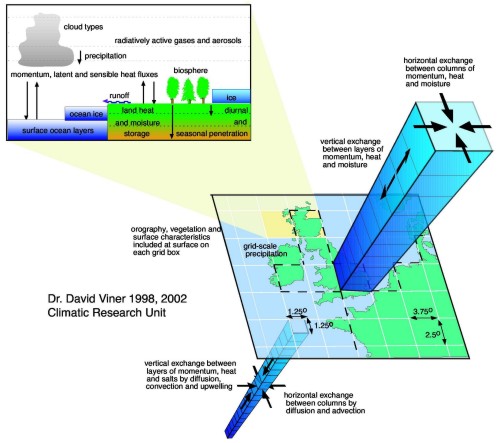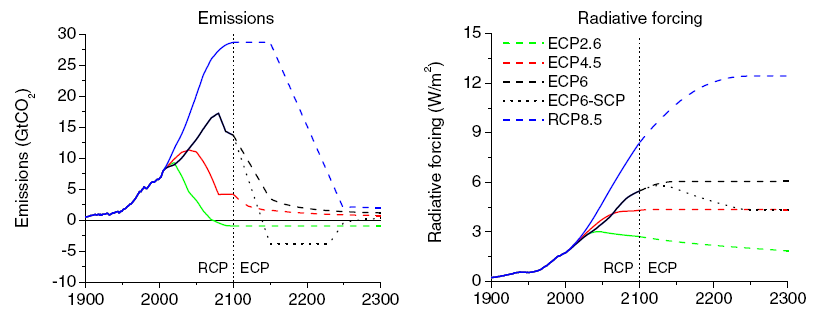
According to the World Meteorological Organization, a climate model is "a mathematical representation of the climate system based on its physical, chemical and biological components, in the form of a computer programme". The use of these numerical models can allow accurate simulation of earth system processes of the atmosphere, ocean, land and freshwater. These complex models interpret individual processes and the global interactions and feedbacks between them. Often, distinct regional models are integrated into global models to enhance accuracy and precision (IPCC, 2013).
Global climate models are able to interpret earth system processes by dividing the earth into three-dimensional square units vertically and horizontally, across the landscape, through the atmosphere and into the depths of the ocean (Figure 1). This layering allows a 30km resolution. Although global climate models are able to accurately depict future climate scenarios, uncertainty arises in small-scale processes, precise regional differences and complex feedback systems (IPCC, 2013).
The TGICA (Task Group on Data and Scenario Support for Impact and Climate Assessment, IPCC) provides criteria to guide the selection of future climate change scenarios, as follows:
- Criterion 1: The warming scenarios used should be comparable to global predictions of greenhouse gas increase (1.4-5.8°C by 2100).
- Criterion 2: The model should adhere to basic physical laws and should be reasonable globally.
- Criterion 3: Spatial and temporal variables should be chosen such that global impacts can be assessed.
- Criterion 4: The full range of possible future scenarios should be characterized to prevent biased assessment.
- Criterion 5: The model results should give accessible results that are easily interpreted, examined and presented.
The current scenarios utilized in global climate modelling are Representative Concentration Pathways (RCP) (Figure 2): rcp8.5, rcp6, rcp4.5, rcp3PD. Each pathway describes predicted cumulative anthropogenic greenhouse gas emissions by the end of the century in Watts per square meter. This broad range of outcomes is based on four different possible economic, demographic, policy, technological and institutional futures.

Figure 2: Representative Concentration Pathways (RCP) and Extended Concentration Pathways (ECP) (Meinshausen et al. 2011)
The preceding scenarios affect the future climate through differential greenhouse gas emission concentrations, population influences, technology, energy, land use, agriculture and economic growth. These varieties of factors are included when assessing these individual scenarios in terms of their effect on climate change. Figure 2 displays the diverse results of these scenarios. In order to test the validity of future model scenario results, current climate is modeled using the same techniques (IPCC, 2013).
References
Climate Modelling Links
Material for this page was provided by Professor Christopher Fletcher, Assistant Professor, Core Member of IC3, Maren Pauly, and Tristan Mills, all Department of Geography and Environmental Management, University of Waterloo.
